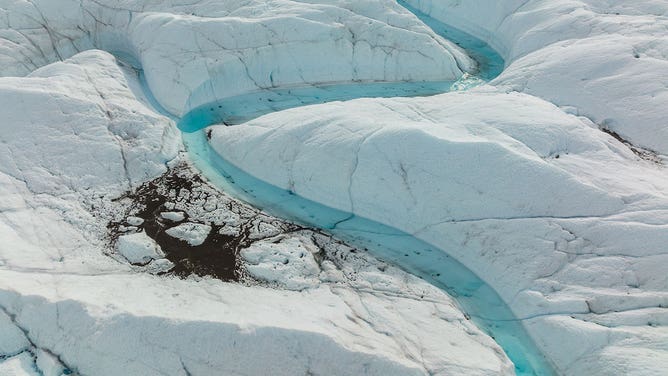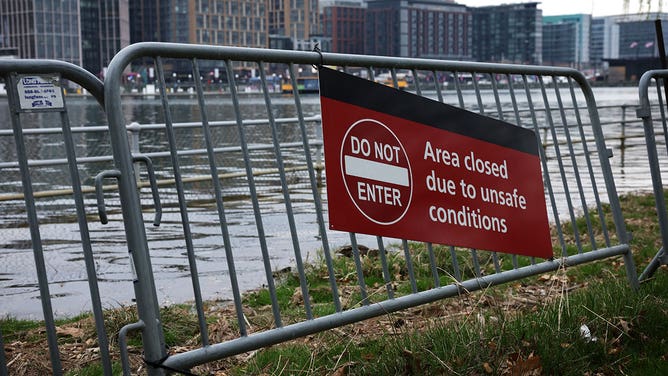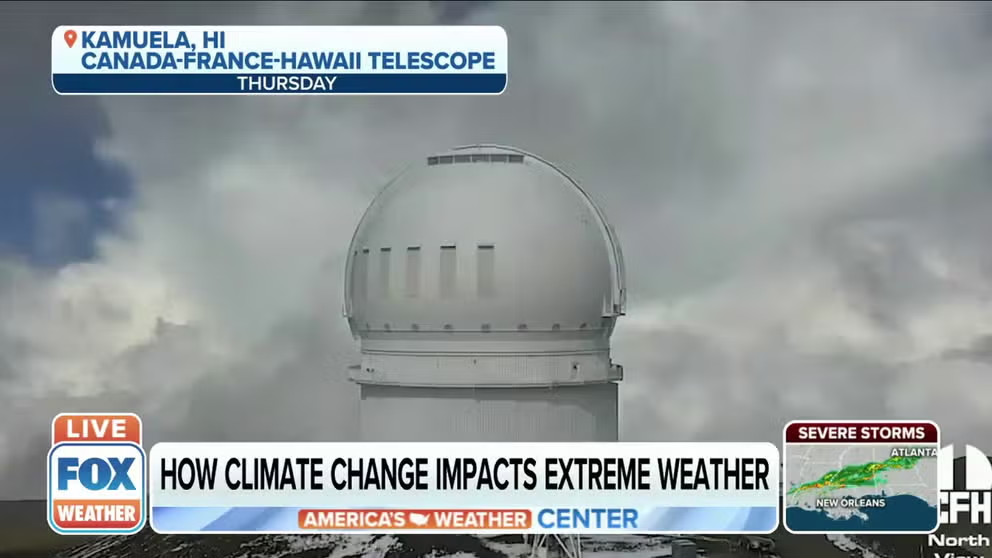Glaciers melted faster than average in 2022 as oceans rose and warmed, scientists say
UN report says glaciers have lost enough ice between 1993-2019 to fill 75 lakes the size of Lake Geneva. Sea levels are also still rising as ocean heat content hit a record high in 2022.
How climate change impacts extreme weather
Katharine Hayhoe, a climate scientist, talks how climate change impacts extreme weather.
Glaciers lost more ice than average during 2022 and oceans continued rising and warming, according to an annual climate report released Friday.
The State of the Global Climate 2022 report issued by the World Meteorological Organization – the weather and climate branch of the United Nations – is aimed at keeping track of the effects of climate change on a planetary scale.
According to the WMO’s report, greenhouse gases, which are created by burning fossil fuels and are the driving force of climate change, continued increasing during the past year. Scientists believe the heat trapped by these gases is creating more extreme weather patterns.
WHY METHANE HAS TAKEN CENTER STAGE IN CLIMATE CHANGE PLANS
"We have already emitted so much of, especially, carbon dioxide into the atmosphere that this kind of phasing out of the negative trends takes several decades," WMO Secretary-General Petteri Taalas said at a news conference about the report.
While many regional temperature records were broken during 2022, the effects of a triple-dip La Niña helped keep the global temperatures in check, according to the report. Taalas said that could change with the approach of an El Niño.
The authors of the report said its key findings echo calls to speed up efforts to address climate change.
MAGIC MUSHROOMS: SCIENTIST SAYS FUNGI COULD REVOLUTIONIZE CLIMATE CHANGE FIGHT

This photo taken on Feb. 14, 2023, from Observation Terrace Sphinx on Jungfrau Mountain at the altitude of 3,571 meters (11,720 feet) above sea level shows the Aletsch glacier in Switzerland.
(Lian Yi/Xinhua / Getty Images)
Glaciers and ice sheets melting
According to the report, some glaciers lost an average thickness of 51 inches between October 2021 and October 2022 - that represents a loss that is much larger than the average of the last decade.
A report from the Intergovernmental Panel on Climate Change said glaciers have lost enough ice between 1993 and 2019 that the water equivalent could fill 75 lakes the size of Lake Geneva, which is the largest lake in Western Europe.
The silver lining to this news is that glaciers in Iceland and northern Norway saw some gains during the same period, according to the WMO’s report.
Glaciers weren’t the only ice on the planet that was melting in 2022, however. According to the report, the Greenland Ice Sheet ended with a negative total mass balance for the 26th year in a row. Antarctic sea ice hit a record low on Feb. 25, 2022, and record lows were also measured during June and July – winter in the Southern Hemisphere.
"We have already lost this melting-of-glaciers game and sea-level-rise game," Taalas said.

An aerial view of meltwater lakes formed at the Russell Glacier front, part of the Greenland ice sheet in Kangerlussuaq, Greenland, on August 16, 2022.
(Lukasz Larsson Warzecha / Getty Images)
Oceans rising and heating up
The melting sea ice is at least partly to blame for rising sea levels around the globe, according to the report. The global mean sea level reached a record high last year and the rate of rise has doubled between the first decade of records (1993-2002) and the most recent decade of records (2013-2022). Melting of glaciers and sea ice in Greenland and Antarctica contributed to 36% of sea level rise between 2005 and 2019.
According to scientists, about 90% of energy trapped by greenhouse gasses goes into the ocean and causes the water to warm. The WMO report said that ocean heat content reached a record high in 2022.
"Heat content which is, for example, giving more energy for the tropical storms, cyclones, hurricanes and typhoons," Taalas said.
Nearly 60% of the ocean surface experienced at least one marine heatwave during the year, according to the report.
RISING SEA LEVELS TO FLOOD NEARLY 650,000 OCEANFRONT PROPERTIES ACROSS US BY 2050, STUDY FINDS

A "Do Not Enter" sign is on display as floodwaters wash up the bank during high tide across the Washington Channel from The Wharf amid cherry blossoms in peak bloom near the Tidal Basin on March 23, 2023, in Washington, D.C.
(Alex Wong / Getty Images)
